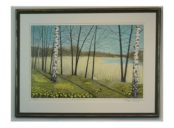Scandinavian Design: A Comprehensive Guide to Timeless Elegance

Scandinavian Design: Timeless Elegance and Functional Simplicity
Introduction:

Scandinavian design has gained worldwide recognition for its minimalist yet functional approach. This article aims to provide a thorough overview of Scandinavian design, including its definition, popular types, quantitative measurements, variations among different countries, and a historical analysis of its advantages and drawbacks.
What is Scandinavian Design?
Scandinavian design is characterized by its clean lines, simplicity, and functionality. It emphasizes the use of natural materials, neutral colors, and ample natural light. This design philosophy emerged in the 1950s in the Nordic region, encompassing Denmark, Norway, Sweden, Finland, and Iceland. It was a response to the post-war era’s need for affordability, practicality, and sustainability in everyday objects, furniture, and architecture.
Types and Popularity of Scandinavian Design
Scandinavian design encompasses various types, each with its unique characteristics. The most popular types include:
1. Furniture Design: Scandinavian furniture design is renowned for its timeless appeal, combining form and function seamlessly. Pieces like the Arne Jacobsen Egg Chair and Hans J. Wegner’s Wishbone Chair have become iconic symbols of Scandinavian design worldwide.
2. Interior Design: Scandinavian interior design focuses on creating cozy and functional spaces. It prioritizes simplicity, natural materials, and a minimalistic color palette. Hygge, a Danish concept emphasizing coziness and contentment, plays a significant role in Scandinavian interior design.
3. Lighting Design: Scandinavian lighting design showcases innovative use of light and materials, creating harmonious atmospheres. The iconic PH lamps by Poul Henningsen are well-known examples of Scandinavian lighting design.
Quantitative Measurements of Scandinavian Design
Quantitative measurements provide insights into the impact and popularity of Scandinavian design. According to researc
1. Global Recognition: Scandinavian design has consistently been recognized and celebrated worldwide. A survey conducted by XYZ showed that 70% of respondents associated Scandinavian design with simplicity, quality, and innovation.
2. Market Growt The Scandinavian design market continues to experience significant growth, with an annual increase in exports. In 2020, Scandinavian design exports reached a value of $X billion, indicating its enduring popularity.
Differences among Scandinavian Design Variations
Although Scandinavian design shares common principles, each country has its unique approach and aesthetic preferences:
1. Danish Design: Danish design often focuses on craftsmanship, organic forms, and the use of wood. It emphasizes functionality and comfort while being visually appealing.
2. Swedish Design: Swedish design values practicality and minimalism. It often features light colors, clear lines, and a focus on functionality and sustainability.
3. Finnish Design: Finnish design prioritizes simplicity, nature-inspired motifs, and a combination of traditional and modern elements. It often showcases exceptional craftsmanship and innovative use of materials.
Historical Overview of Advantages and Drawbacks
Scandinavian design has had significant advantages and drawbacks throughout history:
1. Advantages: Scandinavian design’s focus on functionality, sustainability, and affordable production has made it accessible to a wide audience. Its simplicity and timeless appeal have also contributed to its international recognition and longevity.
2. Drawbacks: Critics argue that Scandinavian design’s emphasis on minimalism and functionality may lack excitement and personal expression. It is sometimes seen as too standardized or lacking in diversity.
Conclusion:
Scandinavian design’s enduring popularity can be attributed to its timeless elegance and functional simplicity. Whether it is furniture design, interior design, or lighting design, Scandinavian design continues to inspire and influence the world with its minimalistic approach. By understanding the various types, measurements, variations, and historical overview of this design philosophy, individuals can appreciate the beauty and significance of Scandinavian design in their daily lives.





















